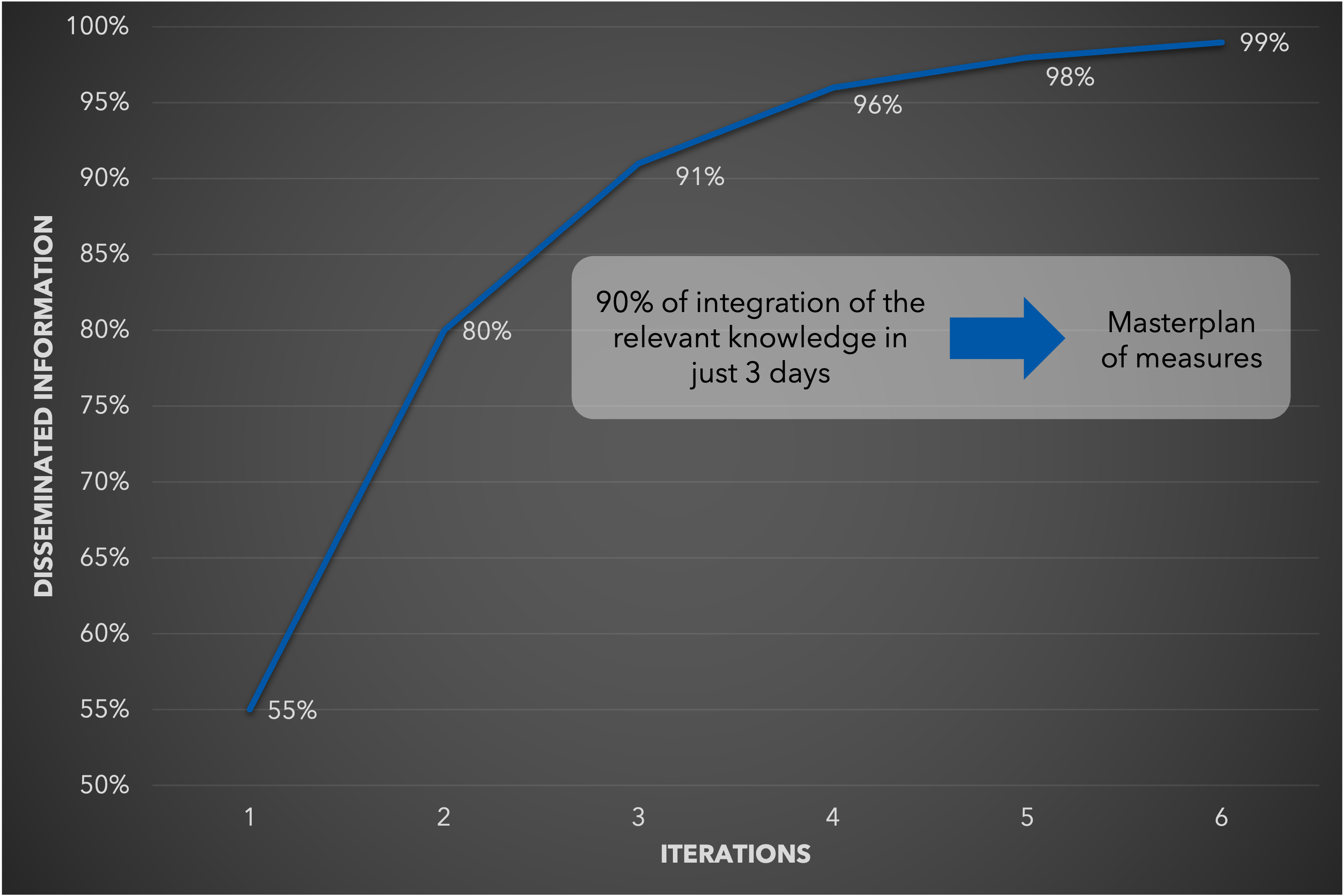Talk to an expert


We use Syntegration for diverse purposes: developing holistic strategies, managing reorientation, efficiently planning large-scale transformations, handling mergers, reducing costs, and resolving conflicts.

A Management Summary
We use Syntegration in a wide range of applications, e.g., to develop holistic strategies with our clients; to manage reorientation processes; to efficiently plan large-scale projects such as transformation and change; to master mergers, to permanently reduce costs or to resolve conflicts. A Syntegration lasts between two to three days and can be implemented for organizations of any kind, size and complexity. Our clients have demonstrated the enormous effectiveness of the Syntegration in over 1’000 applications proven in all cultures and industries across the globe.
Using the existing but dispersed knowledge
Knowledge is generated only in the brains of people – nowhere else. This means that to manage knowledge effectively requires the integration of people, not computers. We are living in a time of ever-increasing complexity, in our organizations and within their respective environments. Therefore, a decision-making process that involves all relevant people and facilitates the exchange of knowledge becomes a vital necessity in order to arrive at the best solutions for the most pressing problems. As the key people of an organization are highly paid and generally overloaded with work, this decision-making process needs to take the shortest amount of time possible.
It also needs to use the full potential and energy of participants and enhance their capacity to be largely self-coordinated and result oriented. Syntegration, a revolutionary method from applied cybernetics and management science, is the best way to integrate the knowledge of people within large groups.
The work of three months in three days
A Syntegration combines the effectiveness and agility of small teams with the collective intelligence of large groups. The Icosahedron (shown below) forms the foundation for a three-dimensional communication structure which allows for the optimal and fastest distribution of knowledge among key people, and thus for finding the best possible solution for a complex problem. By working together intensively in a Syntegration, participants develop a common understanding of the key issues with regard to the problem addressed. Furthermore, they develop a robust consensus, enhanced team spirit and a strong commitment to implement the actions jointly developed by the group. A Syntegration works like a time compression machine: enabling maximum communication in the shortest possible timeframe.
A Syntegration® consists of two phases
The first phase
In the first phase the participants are allocated to the topics and receive a topic voting form used to prioritize the twelve topics. They are asked the followingquestion “Based on my experience and expertise - To which topics can I contribute the most?”. The allocation of participants to struts is based on running an optimization algorithm, which calculates, out of approximately 1040 possibilities, the best allocation of people and topics within the Icosahedral structure. Each participant is then allocated to a single strut, represented by one of the 30 edges of the Icosahedron, for the next phase of the Syntegration.
The second phase
In the second phase, the twelve topics are discussed intensively in topic team meetings. Two topic teams meet simultaneously in different meeting rooms, each working on its own topic. After a short break the next two groups meet. This continues for six rounds until each of the twelve groups have met once, completing one iteration.
Each participant plays three different roles in team meetings – as a team member in two topic groups, as a critic in two other groups and as an observer in up to four other groups. Each group is supported by a facilitator who is a member of the Syntegration delivery team. The task of a team member is to explore and discuss their topic, and to define clear recommendations for action. Team members and critics meet in the same group composition three times (iterations) during the Syntegration. At the end of each team meeting the group facilitator formulates a statement that is displayed and distributed to all other participants.
Critics support the group by pointing out strengths and weaknesses of the team’s discussion or process, and by suggesting improvements or additions.
They may do so only during their allotted time: two five minute-periods during a typical team meeting. Critics can comment on the content and on the process of the discussion. Their role is important in guarding against ‘groupthink’ as team members seek to come to understanding or agreement.
Observers take on the role of “information networkers”. By observing team meetings, they receive information which they can use as input for their own team meetings. Observers listen and may take notes but are not allowed to speak or actively participate during meetings. Observers can influence the discussions and offer knowledge in various other ways: by talking to team members during breaks and by depositing comments in the respective topic channel.
In plenary meetings during and at the end of the Syntegration, the results of each group are presented. Syntegration results in an integrated catalogue of concrete actions, fully documented and at each participant’s disposal.
By the end of a Syntegration, about 90% of the entire available information within the group has been dispersed among all participants. This represents a measure called the “Eigenvalue”, and can be calculated exactly. It results from the self-coordinated flow of knowledge and information that is due to the underlying structural model of the Icosahedron and protocols of Syntegration.

Unbelievable! Syntegration accomplished what would have taken three months of work in just three days. The efficiency and results were truly astounding, and I’m beyond impressed with the outcomes achieved in such a short period.
Syntegration is not just any new workshop concept, but a fundamental innovation in communication, because it combines the problem-solving ability of large groups with the efficiency of small teams on a cybernetic basis.
Syntegration is like a time compression machine, delivering maximum information in minimal time. It’s an incredibly efficient way to absorb knowledge and insights that would otherwise take much longer to acquire. Highly effective and time-saving!